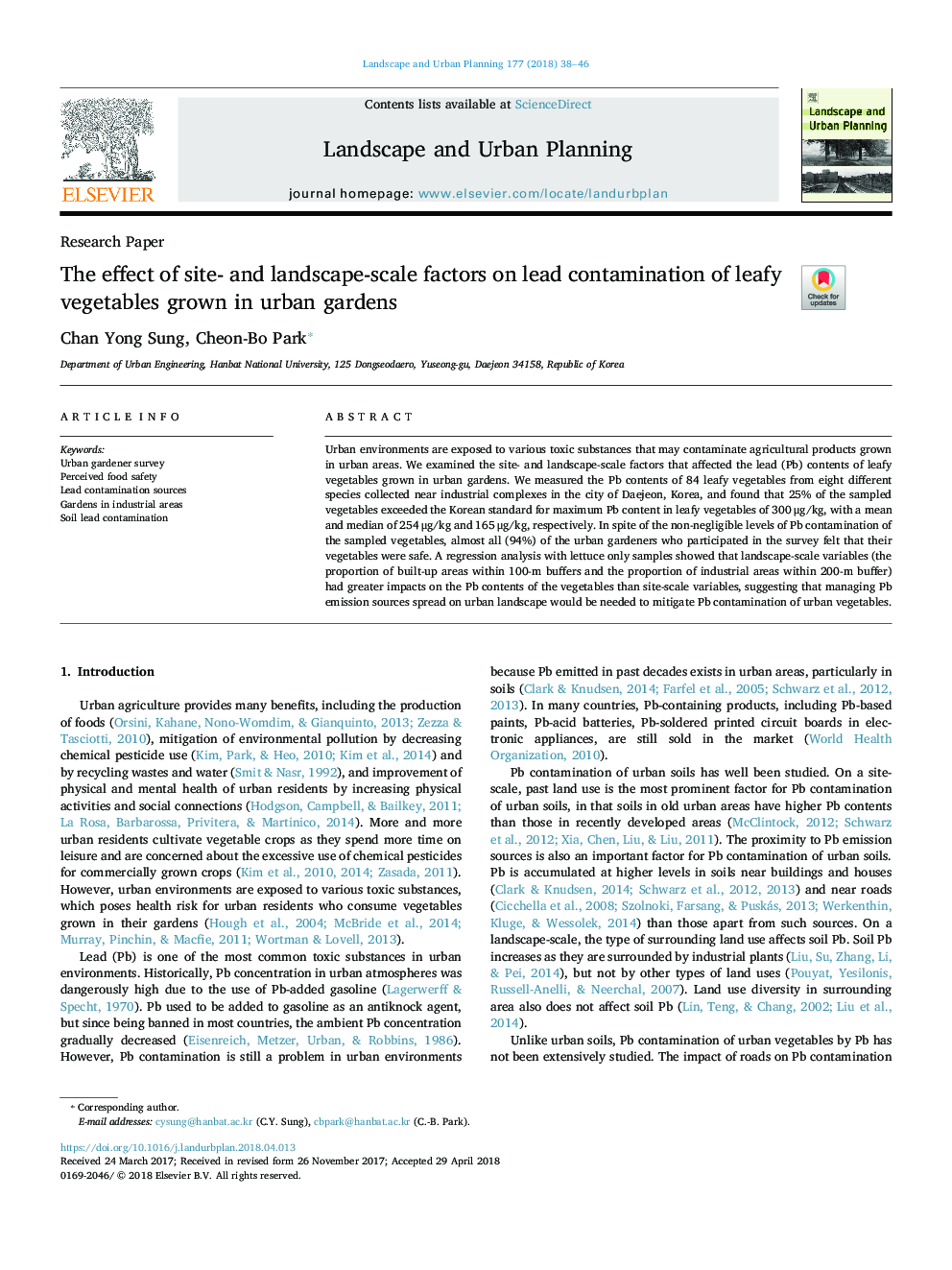| Article ID | Journal | Published Year | Pages | File Type |
|---|---|---|---|---|
| 7459518 | Landscape and Urban Planning | 2018 | 9 Pages |
Abstract
Urban environments are exposed to various toxic substances that may contaminate agricultural products grown in urban areas. We examined the site- and landscape-scale factors that affected the lead (Pb) contents of leafy vegetables grown in urban gardens. We measured the Pb contents of 84 leafy vegetables from eight different species collected near industrial complexes in the city of Daejeon, Korea, and found that 25% of the sampled vegetables exceeded the Korean standard for maximum Pb content in leafy vegetables of 300â¯Î¼g/kg, with a mean and median of 254â¯Î¼g/kg and 165â¯Î¼g/kg, respectively. In spite of the non-negligible levels of Pb contamination of the sampled vegetables, almost all (94%) of the urban gardeners who participated in the survey felt that their vegetables were safe. A regression analysis with lettuce only samples showed that landscape-scale variables (the proportion of built-up areas within 100-m buffers and the proportion of industrial areas within 200-m buffer) had greater impacts on the Pb contents of the vegetables than site-scale variables, suggesting that managing Pb emission sources spread on urban landscape would be needed to mitigate Pb contamination of urban vegetables.
Related Topics
Life Sciences
Agricultural and Biological Sciences
Ecology, Evolution, Behavior and Systematics
Authors
Chan Yong Sung, Cheon-Bo Park,
